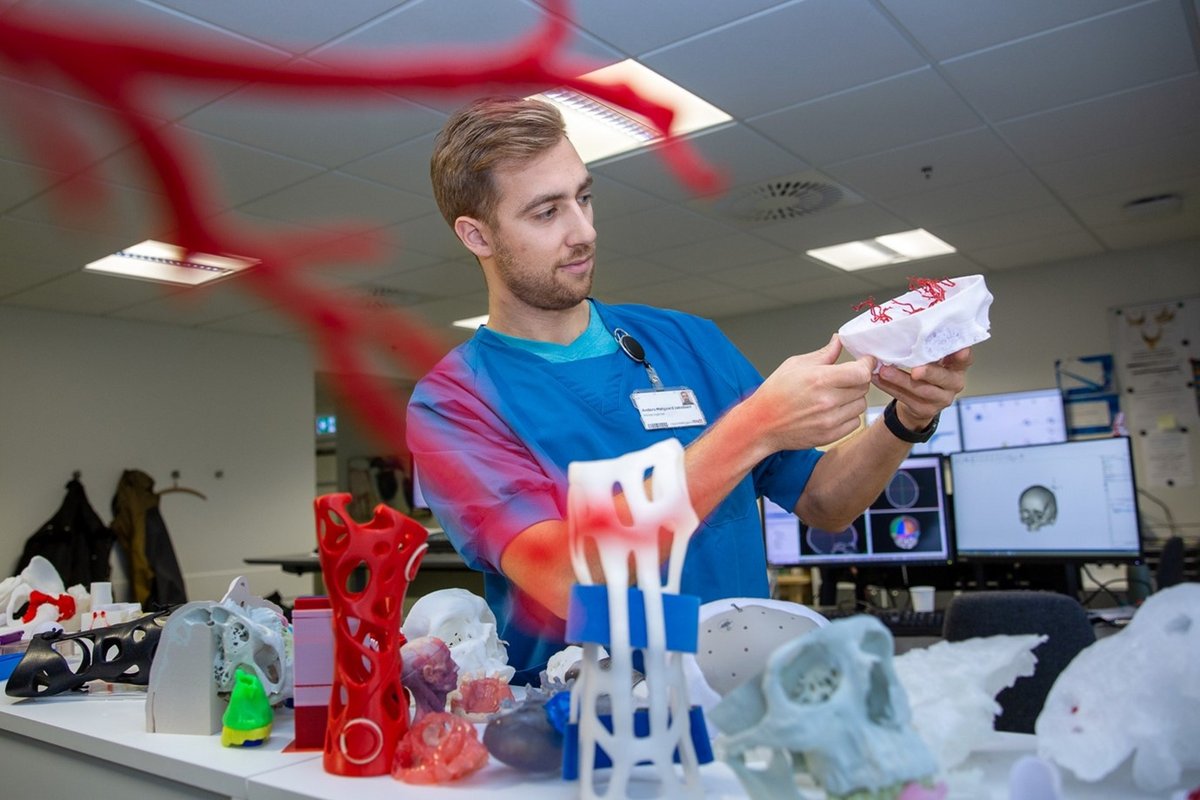
A patient needs to have a tumour removed from the lower jaw. As an engineer, Anders has played an important role during the pre-operative phase. He has printed an anatomic model of the lower jaw and a 3D-template, a so-called cutting guide, which the surgeon will use to remove the tissue as precisely as possible.
“Surgeons used to have to rely solely on their eyes. Instead, they can now use our cutting guides that are adapted to the individual patient's anatomy and pathology. This reduces the duration of surgery and improves safety so treatment is much better," says Anders Mølgaard Jakobsen.
He specialised in medical 3D printing during his studies, and now refers to himself as something of a pioneer. Together with two other engineers from Aarhus University, he has established one of Europe’s first hospital departments for 3D innovation.
"Here in Aarhus, we’re taking the lead in medical 3D printing, and I think we’ll see much more of it in the future. As the healthcare sector moves in a more technological direction, engineers and doctors will begin working much closer together," he says.
A normal day for Anders begins at 8:00, when he meets with his engineering colleagues for an overview of the day’s workload. 3D Innovation services the entire hospital and therefore deals with many different patient groups.

"We work with everything from jaw surgery to intestinal surgery, and from cardiac surgery to neurosurgery and bone implants. It's very varied and hugely exciting. I spend some days sitting at my computer and drawing anatomical models on the basis of scanned images or cutting guides for surgeons. On other days, I'll be in full surgical gear and heading into the operating theatre to get a sense of how our prints are working," he says.
Anders uses the anatomical 3D-models to help surgeons prepare for a surgical procedure.
"It’s incredibly helpful during pre-operative planning for doctors to be able to see the pathology through a physical model, for example a tumour on an organ or an outpouching on a blood vessel. It’s easier to prepare for an operation when you have something tangible in your hands. The surgeon can then give us very precise feedback on how we can adjust the design of the various surgical tools that we print,” he says.
Anders’ working life and his hobbies are intertwined. He has never regretted applying for the engineering programme even though he had doubts at the time.
“I actually feel incredibly lucky. It’s a bit of a dream job. I spend each day working with something I’m interested in and get to see how it helps both doctors and patients.”